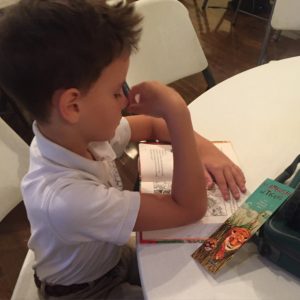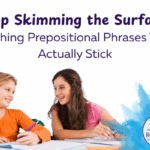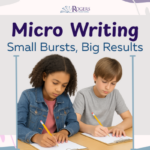** Contact us if you would like Rogers Education Consulting to come to your campus with engaging, evidence-based, and practical professional development **
 Disclaimer before you begin reading this post: I am not anti-leveling students. Assessing students, with any program, and getting a ballpark idea of their reading level is a great starting point. I do firmly believe, however, that a level assigned by a program cannot be the definitive, clear, or only level at which a child should read.
Disclaimer before you begin reading this post: I am not anti-leveling students. Assessing students, with any program, and getting a ballpark idea of their reading level is a great starting point. I do firmly believe, however, that a level assigned by a program cannot be the definitive, clear, or only level at which a child should read.
An assessment that gives a student a reading level is just providing the teacher with a ballpark or estimate of what the student is capable of reading. There will always be exceptions. If you have a student who loves a certain sport or animal, that student will be able to read a book on the topic that is well beyond “their level.” Additionally, nonfiction and fiction texts are not created equally. Even for students who prefer it, nonfiction will always be slightly more difficult to read because of the greater cognitive demands placed on the reader to comprehend the text and its specialized features. And I won’t ever forget my fifth-grade (male) student who wanted to read Ella Enchanted (a bookmarked at his frustrational level) in order to be in a literature circle with a group of pretty girls. In all three scenarios, motivation and prior knowledge allow students to read at much higher levels than thought possible based on their assigned level. How sad would it be if they were not allowed to do so simply because their report says no?
Not only are reading levels not decisive, they can’t be the only level a student reads! Students should spend time on many different levels. Sometimes students might want to pick up an old favorite, a book from their childhood that holds special memories and a high level of comfort. Surely this book would be well below their reading level. As long as they don’t read in that level indefinitely, there is nothing wrong with this! Students will still gain new insights from rereading and can still learn from a text that is “too easy” for them. Additionally, students need to experience reading texts that are at a frustrational level. They would not attempt to read at this level independently, but rather with full teacher supports and scaffolding. Students need to build their toolbelt with reading skills and strategies that will help them approach texts they might otherwise not be able to attack. Of course, as anyone skilled in Guided Reading will tell you, students must also spend time in an instructional level text that they can read with some support. This helps students progress to the next level of their reading.
How do you balance students reading at all levels of text?



I really enjoyed this article. Students, I believe, have many different reading levels based on their interest. One student may be able to read a fiction novel on level, but read a non-fiction article a level below or two. Reading levels really do depend on personal preference. Students need to be able to comprehend the text know matter what level they are on.